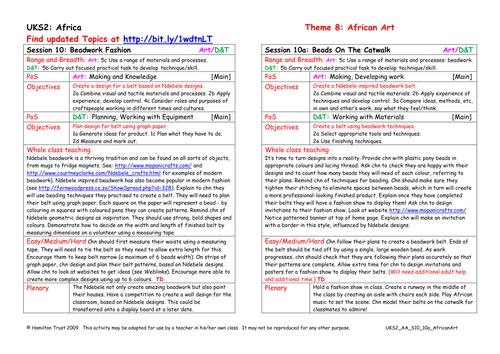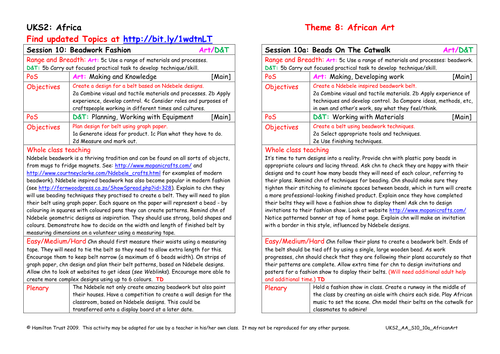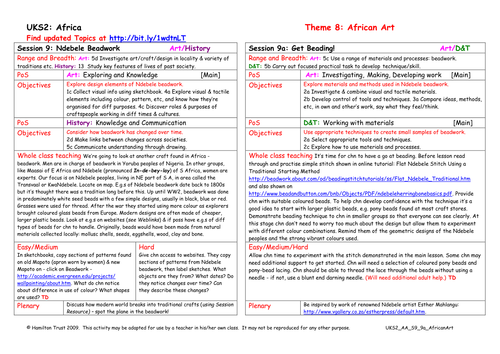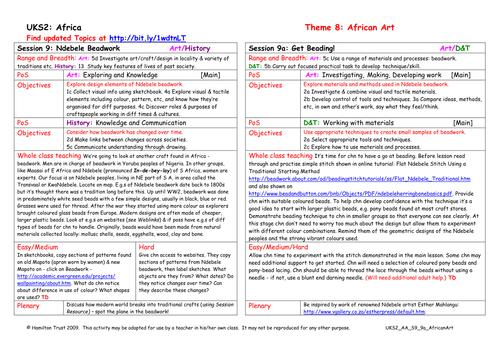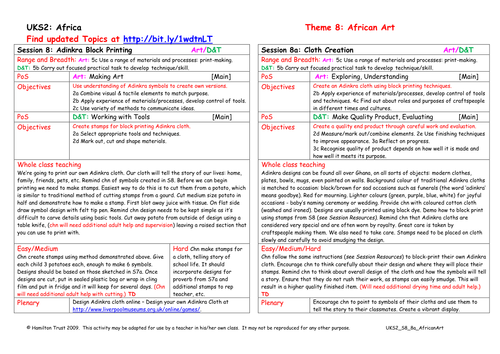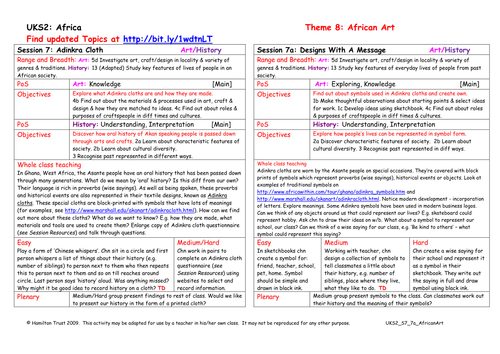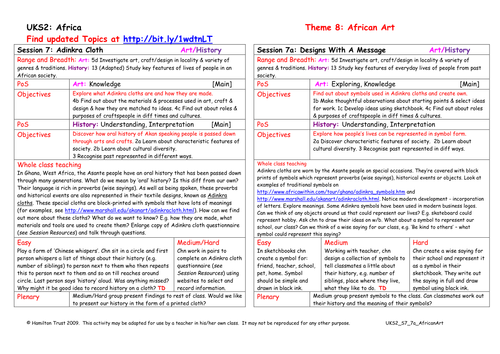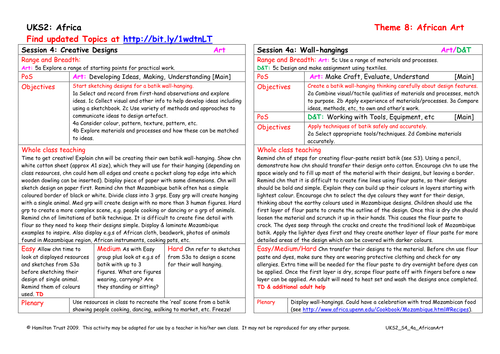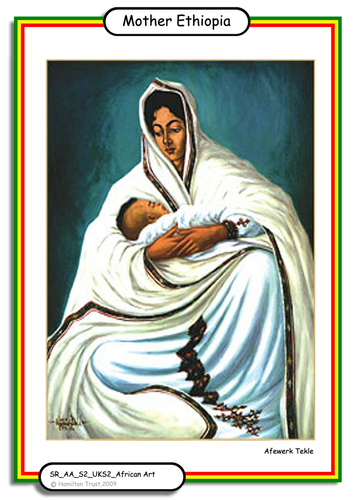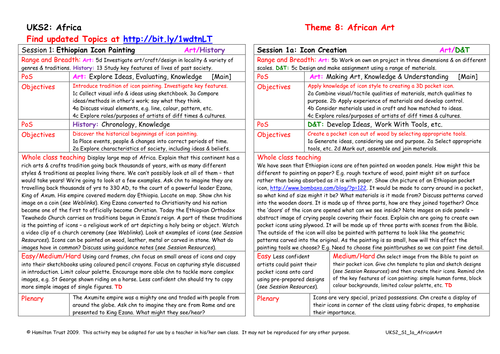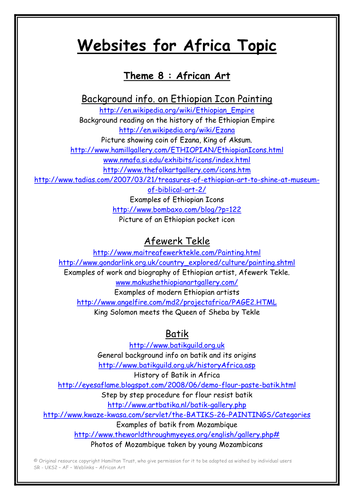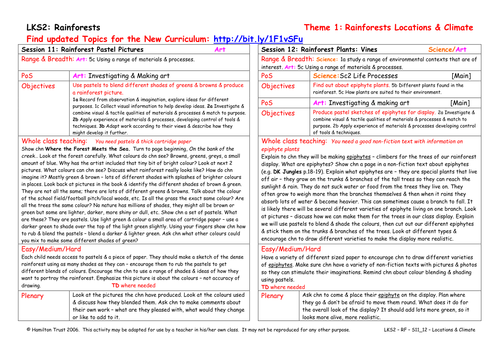
397Uploads
10014k+Views
11624k+Downloads
Art and design

Batik Technique
Introduce children to the techniques of flour resist batik and explore the history of batik in Africa. Children get a chance to practise the methods themselves.

Beads On The Catwalk
Hold a fashion show in class! Children create their own beadwork belts based on Ndebele designs and using traditional methods. Sensational!

Beadwork Fashion
Ndebele beadwork is a thriving tradition and can be found on all sorts of modern items. Children explore how it has been used in fashion and design simple belts based on the geometric designs of the Ndebele people

Get Beading!
Time to have a go at beading! The traditional Ndebele methods of beading are demonstrated and children have a chance to experiment with this new technique.

Ndebele Beadwork
Zooming in on South Africa, children are introduced to the incredible beadwork of the Ndebele people of KwaNdebele.
Through web images children explore the history of this craft and investigate its key visual elements.

Cloth Creation
Inspired by the Adinkra cloths worn on special occasions all over Ghana, children create their own versions. Children think carefully about overall design of their cloth and how they will block print using stamps.

Designs With A Message
Adinkra cloths are craft with a message. Children explore the traditional symbols printed on the cloths and create their own symbols to tell a story of their own lives.

Adinkra Cloth
Moving to West Africa, children explore how history of Asante people has been represented through the craft of block printing Adinkra cloths.
Children use web research to find out about history, techniques and processes involved.

Wall hangings
Using the techniques of flour resist batik, children create wall hangings in the style of the Mozambique batik they have studied.
Children are encouraged to carefully select techniques and tools to create a quality product.

Ethiopian Inspiration
Think big and create a class mural based on the work of Afewerk Tekle.
Children work collaboratively to plan and paint a mural with a biblical subject in the same style as Tekle.

Afewerk Tekle
It’s time to come up to date and look at work of a modern Ethiopian painter: Afewerk Tekle.
Children use websites to find out how his work has been influenced by the tradition of icon painting.

Icon Creation
Create an Ethiopian pocket icon. Children explore techniques of painting on wood and create their own icon images based on their studies.

Ethiopian Icon Painting
Take a trip back in time to introduce art of icon painting from ancient kingdom of Ethiopia.
Children explore features of this art form and consider how they were painted and their purpose. They copy small areas of icons to capture style elements.

Rainforest Pastel Pictures
Using Where the Forest Meets the Sea children study in detail the palette of colours created by the rainforest. Then using pastels and blending techniques children create a pastel rainforest picture.
Suitable for years 3 and 4.

Observational drawing of a favourite toy
Children learn the word ‘texture’. They look carefully at their favourite toy and talk about the feel and appearance. They decide which media they want to use to represent it and do a beautiful drawing! They talk about their work and the work of other people.
Suitable for years 1 and 2.


